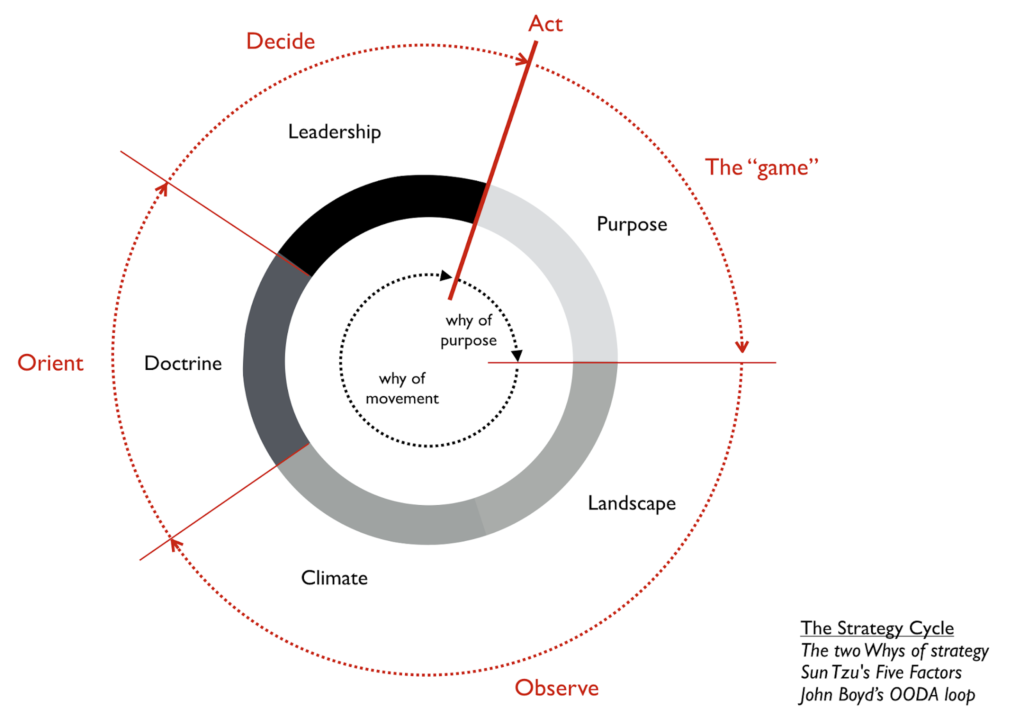Thanks to Younès, I have discovered a few years ago the concept of “Wardley Maps”.
I’m far from mastering this and I still have a lot of readings to be done about it!
Though, I believe any one working with Software or Product (or both!) should give it a try! And who best than Simon Wardley himself to convince you?
Take 40 min of your time for this conference: It’s as fun as a one man show, yet as instructive as a whole book!
Once you’re done with the conf, you might be hungry for more of that! And this part is written as a book here: On being lost. Chapter 1 | by swardley | wardleymaps | Medium
Once you have have seen the conference (at least), you can click on “read more bellow” to be spoiled on my own take away (memos) from Wardley Maps.
Take away are still in progress…
The Strategy Cycle

- The game
- Purpose – Moral imperatives
- Observe
- Landscape – The environment you will compete against
- Climatic patterns – Things that change in the environment
- Orient
- Doctrine – The way you organize yourself
- Decide
- Leadership – Context specific gameplay
The why of Purpose (win the game) vs. the Why of Movements (why such action here and there?)
Situational Awareness
How do we observe the Landscape?
To navigate, you can either learn text stories… or use a visual map.
Business still uses text too often.
This make me think of what I read in “Thinking Fast & Slow” (Daniel Kahneman): Our brain is made in such a way that we not only need to find causalities for everything, but it is extremely difficult for us to avoid it. Many situations are only little impacted by “magic strategies” and mainly impacted by a randomness of events (or shall we call it “luck”). Simon W. explain it in another way with chess: If we were constraint to play chess without visual maps, we would analyze sequences of movements and try to identify “secret [sequences] of success”. Unfortunately, our brain still want to believe in these “secret of success” formulas. That is why they are so popular (books about leadership holding the truth on how to be successful — haha). Though mapping are more rational, yet more difficult than applying a magic formulas and blaming external events or un-luckiness in case of failure. This makes me think of “From good to Great” (James C. Collins): the mirror versus the windows.
Back to Situational Awareness (SA): Low SA will always lose against high SA.
if you play chess without seen the board against someone who sees it… you’ll lose!
Maps…
…have to be
- Visual
- Context Specific
- have position (North East West South)
- with an Anchor
- showing movement
Diagrams are not maps: They don’t have position (you can move each component anywhere without changing the meaning) neither movements (you don’t see how things evolve).
Mapping for business can be arranged as follwing:
- Positioning relative to your customer outcomes (how visible/close it a component to the final user).
- Movement relative to the evolution pattern (from Genesis to commodity) of the component.
